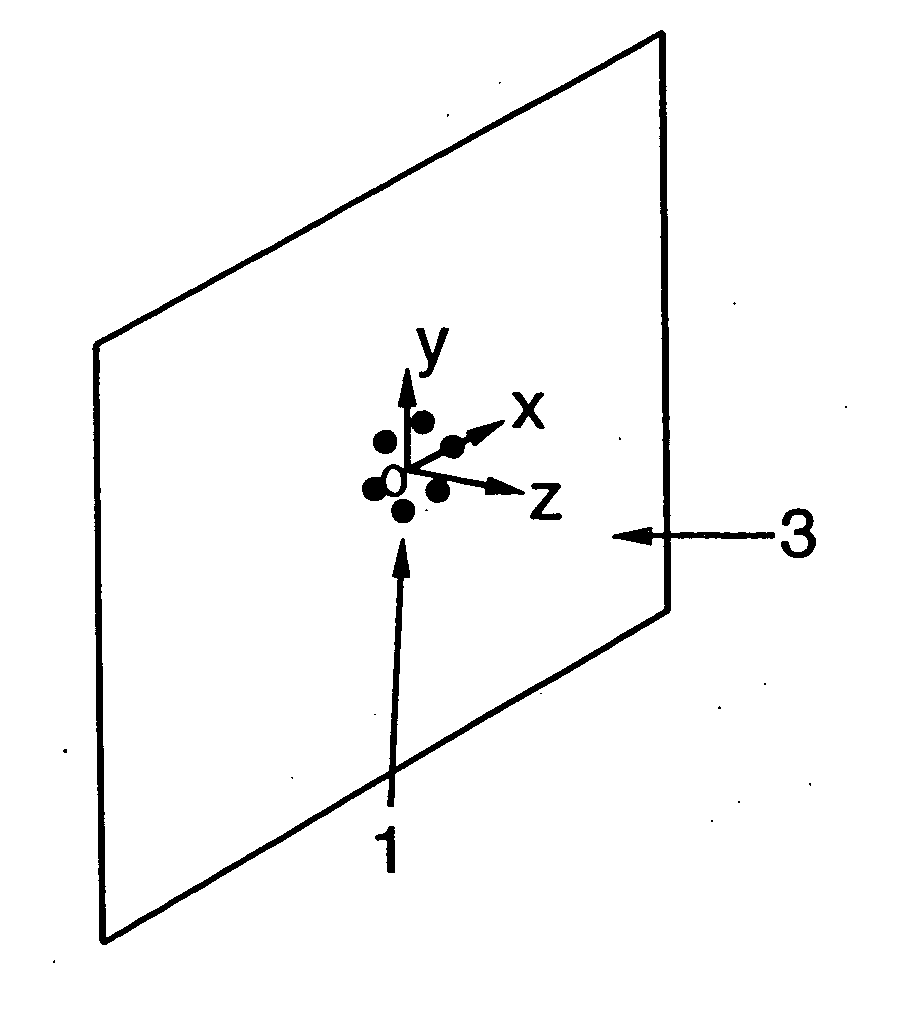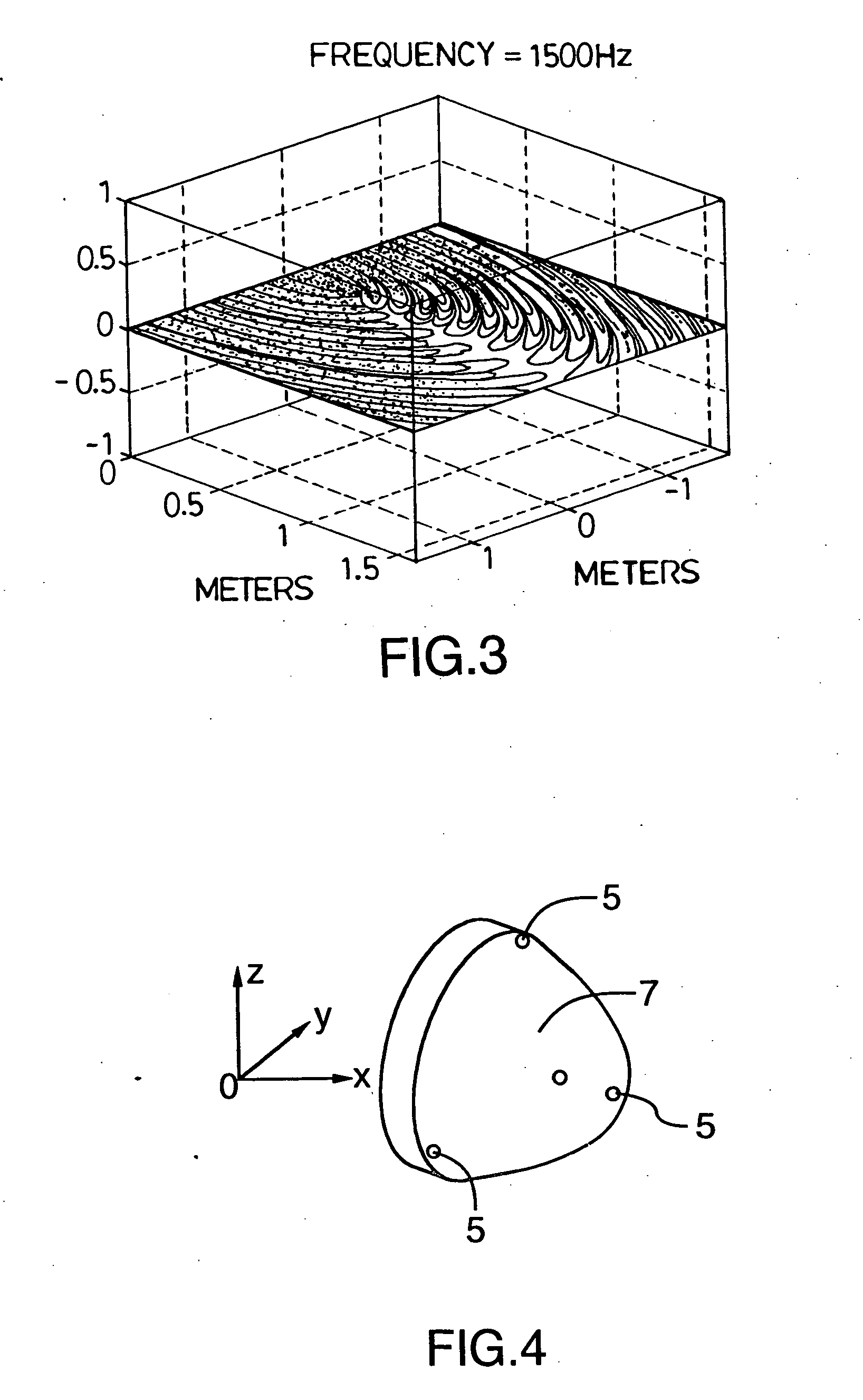High precision beamsteerer based on fixed beamforming approach beampatterns
a beamforming and beam pattern technology, applied in the field of beamsteering, can solve the problems of prior art sound localization systems, difficult to create a main beam with a very narrow beam angle, and underestimate the bearing of a source, and achieve the effect of reasonable error robustness and high angular resolution
- Summary
- Abstract
- Description
- Claims
- Application Information
AI Technical Summary
Benefits of technology
Problems solved by technology
Method used
Image
Examples
Embodiment Construction
I. Microphone Configuration
[0032] In the preferred embodiment, the frequency range of operation is between 1000-1500 Hz in air (wavelength: 0.22[0033] 1. The background noise level diminishes with frequency. [0034] 2. The speech intelligibility is reasonably important in this band. [0035] 3. Reverberation also diminishes with frequency although it is important in the low end of the chosen interval.
[0036] The simplest embodiment of the inventive beamsteerer is implemented in an audio-video conferencing system as shown in FIG. 1, comprising a planar microphone array 1 on a reflecting plane 3. Ideally, the reflecting plane 3 is a wall toward which most of the participants look during an audio-video conference (e.g. a video screen above which a video camera (not shown) is placed). The microphone spacing is selected to respect the well known λ / 2 criterion. The two-dimensional array 1 is capable of providing a unique null in a plane normal to the plane 3 of the array (i.e. in the directi...
PUM
 Login to View More
Login to View More Abstract
Description
Claims
Application Information
 Login to View More
Login to View More - R&D
- Intellectual Property
- Life Sciences
- Materials
- Tech Scout
- Unparalleled Data Quality
- Higher Quality Content
- 60% Fewer Hallucinations
Browse by: Latest US Patents, China's latest patents, Technical Efficacy Thesaurus, Application Domain, Technology Topic, Popular Technical Reports.
© 2025 PatSnap. All rights reserved.Legal|Privacy policy|Modern Slavery Act Transparency Statement|Sitemap|About US| Contact US: help@patsnap.com



